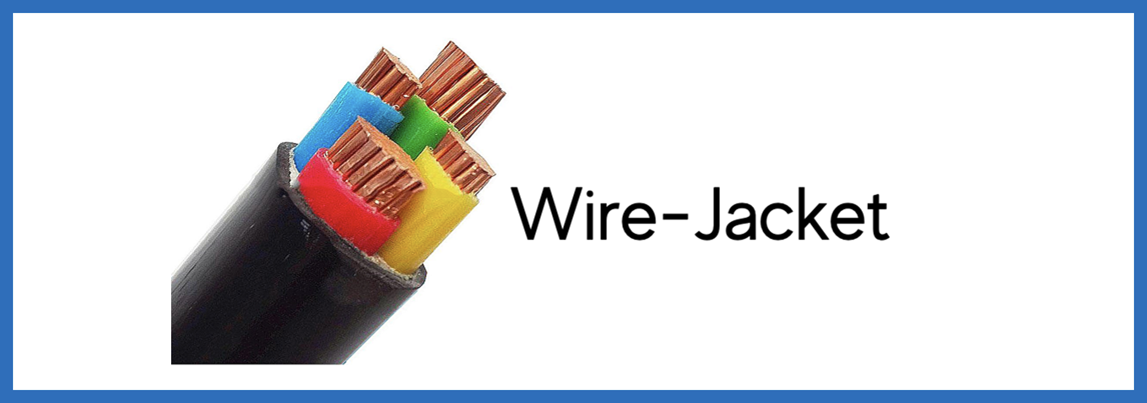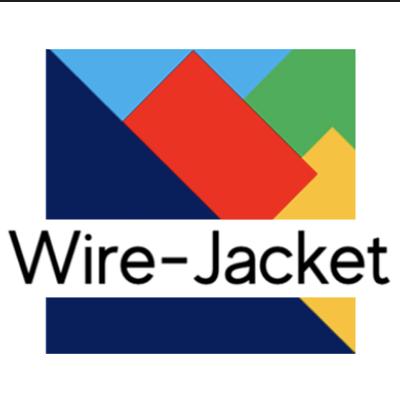Jacket of google/wire: advanced DI approach wrapping google/wire for cloud.
- google/wire : https://github.com/google/wire
A jacket is an outer sheath that groups wires and protects the core from external issues.
wire-jacket wraps google/wire and provides advanced DI(Dependency Injection) experience in cloud-native.
Install Wire-Jacket by running:
go get github.com/bang9211/wire-jacket
and ensuring that $GOPATH/bin is added to your $PATH.
Wire-Jacket example of ossicones. In this example, ossicones is simple blockchain package. It consisted of only 3 components: Config, Database, Blockchain.
Define simple two Interface, Implement.
type Database interface {
Connect() bool
Close() error //necessary for Wire Jacket
}
type MySQL struct {
cfg viperjacket.Config
}
func NewMySQL(cfg viperjacket.Config) Database {
return &MySQL{cfg : cfg}
}
func (m *MySQL) Connect() error {
address := m.cfg.GetString("address", "localhost:3306")
...
return nil
}
func (m *MySQL) Close() error {
return nil
}type Blockchain interface {
Init() error
Close() error //necessary for Wire Jacket
}
type Ossicones struct {
db *Database
}
func NewOssicones(db Database) Blockchain {
return &Ossicones{db : db}
}
func (o *Ossicones) Init() error {
err := o.db.Connect()
...
return nil
}
func (o *Ossicones) Close() error {
return nil
}Suppose there is MongoDB that implements Database Interface like MySQL. And Wire-Jacket has ViperJacket by default.
Then, there are 3 Interfaces and 4 Implements.
- Database
Interface- MySQL, MongoDBImplement - Blockchain
Interface- OssiconesImplement - (Default) Config
Interface- ViperJacketImplement
Database depends on viperjacket.Config. Blockchain depends on Database.
The pair of interface and implement called module in Wire-Jacket.
Wire-Jacket helps to replace implement of interface easy way. And close modules gracefully. So the modules are closable, have to implment Close().
package wire
func InjectMySQL(cfg viperjacket.Config) (Database, error) {
wire.Build(NewMySQL)
return nil, nil
}
func InjectMongoDB(cfg viperjacket.Config) (Databsae, error) {
wire.Build(NewMongoDB)
return nil, nil
}
func InjectOssicones(db Database) (Blockchain, error) {
wire.Build(NewOssicones)
return nil, nil
}
// key will use in app.conf
var Injectors map[string]interface{} = {"mysql" : InjectMySQL}
var EagerInjectors map[string]interface{} = {"ossicones" : InjectOssicones}wire wire.go
wire is compile-time DI. It can verify validity of DI in compile-time.
# Specify module to use.
modules=mysql ossicones
# And you can add any config to use.
db_host=localhost
db_port=3306
Choose modules to use mysql, ossicones.
Database binds to MySQL, Blockchain binds to Ossicones.
wj := wirejacket.New().
SetInjectors(wire.Injectors).
SetEagerInjectors(wire.EagerInjectors)
// inject eager injectors.
wj.DoWire()Except for eager injectors, injectors are loaded lazy by default.
Or If you call wj.GetModule() to get the module you need, all the dependencies of the module will be injected automatically. you don't need to call DoWire() in this case. It is not necessary to call DoWire().
Assume that there is mongodb like mysql as the implementation of Database.
If you want to change implement of Database to mongodb,
Just modify modules in config and restart app.
modules=mongodb ossicones
- google/wire based IoC Container
- Environment-variable based setting for cloud
- Lazy Loading, Eager Loading
google/wire works statically because it performs DI at compile-time. This approach is great for pre-debugging of DI.
It is difficult to debug problems that occur at runtime like dependency injection in a cloud environment. So It can be usefully used in a cloud environment.
Wire-Jacket wraps google/wire in order to use google/wire appropriately for the cloud environment.
google/wire just provides injecting and binding features, do not have an IoC container. IoC Container makes it easy to version up and replace modules. You can also make a Plan B and keep it. For example, DB Skip mode that does not use DB or emergency processing mode that does not actually connect with other nodes can be applied by replacing module and restarting.
And it helps not to use singleton as a global variable. Automatically maintains and recycles one singleton object.
The Twelve-Factors recommends use environment variables for configuration. Because it's good in container, cloud environments. However, it is not efficient to express all configs as environment variables.
So, we adopted viper, which integrates most config formats with
environment variables in go.
By using viper, you can use various config file formats without
worrying about conversion to environment variables even if it is
not in env format like json, yaml, toml, etc.
In Wire-Jacket, modules to use set in config file. For example, if you use the MySQL DB implementation in your app and want to replace the implementation with MongoDB, you don't need to change the code.
just change MySQL to MongoDB in config and restart the app.
Wire-Jacket uses the simple approach of injecting implement into the interface. This approach simplifies and allows the team leader or designer to define the interface required for the project and effectively divide the work. the each implementation can be integrated easily and replaced as a plug-in using the config file.
Features of Wire-Jacket [ko] : https://syntaxsugar.tistory.com/entry/koWire-Jacket-IoC-Container-of-googlewire-for-cloud-native




